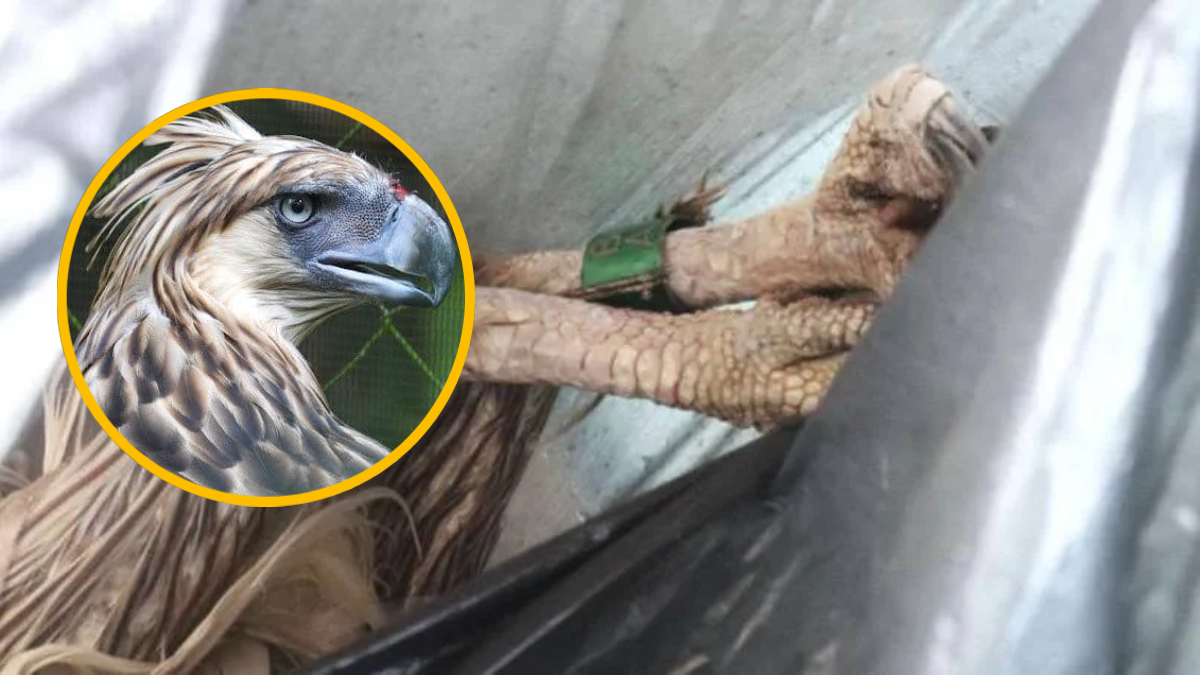Uswag, the Philippine eagle released into the wild in Leyte just a month ago was found dead at sea off Barangay Cawit in Pilar, Cebu. The discovery has cast a shadow over ongoing conservation efforts aimed at reintroducing the critically endangered species.
On Saturday, August 3, members of the Philippine Coast Guard (PCG), representatives from the Philippine Eagle Foundation (PEF), and local fisherfolk retrieved the three-year-old eagle’s body after 42 hours of intensive search operations. Uswag was found floating among sea debris, with its GPS transmitter and miniature solar panels exposed.
The search was triggered by GPS readings received on July 30 by PEF director Jayson Ibañez, indicating Uswag was at sea. The readings were a stark contrast to earlier data from July 9, which showed the eagle thriving over the western slopes of Mount Pangasugan in Baybay City, Leyte.
The search and recovery team, including the Department of Environment and Natural Resources (DENR) in Eastern Visayas, began operations on August 1 in Baybay City. By August 2, GPS signals tracked Uswag to the coastal waters between the islands of Poro and Ponson in Cebu.
Uswag’s body was eventually spotted by a PCG member in an area where two sea currents converge. Fisherman-volunteer Mark Bryan Colminas retrieved the eagle’s remains from the water. An initial X-ray examination revealed no signs of shooting, trauma, or injury. The full necropsy report, expected from the College of Veterinary Medicine at Visayas State University (VSU), is anticipated to provide more insights, with drowning suspected as the cause of death.
PEF mourned the loss of Uswag, noting that the eagle had successfully hunted in the wild during its initial days of freedom. The organization speculated that adverse weather conditions brought by the southwest monsoon might have disoriented the young raptor, leading it to the sea.
Uswag’s death marks the ninth instance of a Philippine eagle crashing at sea since 1984. Conservationists had hoped that Uswag, along with a female eagle named Carlito, would establish a breeding population in Leyte, revitalizing the species in the province following the devastation of Super Typhoon Yolanda (Haiyan) in 2013.






